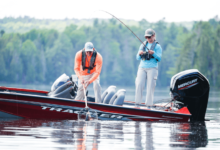Green Innovations in Sports Equipment and Outdoor Gear

Introduction
Sports and outdoor activities are more than just leisure—they’re a lifestyle, a billion-dollar industry, and a passion that unites people across the globe. But as the world grows more eco-conscious, athletes, fans, and manufacturers alike are asking: how sustainable is the sports industry?
From stadium waste to synthetic turf, from polyester jerseys to plastic-based camping gear, the environmental impact of sports and outdoor equipment has become impossible to ignore. In fact, the sports industry contributes millions of tons of carbon emissions every year. Outdoor brands and global sportswear giants are now under pressure to innovate and align with a greener future.
Fortunately, the tide is shifting. The rise of eco-friendly sports equipment and outdoor gear is transforming how athletes train, play, and adventure. Innovative fabrics, recycled plastics, sustainable polymers, and biodegradable materials are reshaping everything from sneakers to stadiums. Among these innovations, polyvinyl alcohol (PVA) is emerging as a versatile material—used in coatings, adhesives, and packaging—that combines high performance with eco-friendliness. Companies like Kuraray Poval are leading advancements that help the sports and outdoor industries adopt greener solutions without compromising durability or function.
This article dives deep into how sustainability is redefining sports equipment and outdoor gear in 2025, the challenges that remain, and what the future of green innovation looks like.
1. The Environmental Footprint of Sports
The sports and outdoor industry has long relied on synthetic materials like polyester, nylon, and rubber—materials that are durable but environmentally damaging.
- Mass Events Waste: The Olympics and World Cup generate thousands of tons of waste in just weeks.
- Polyester Jerseys: Require large amounts of water and chemicals to produce, and shed microplastics in laundry.
- Synthetic Turf: While reducing maintenance costs, it often contains microplastics that break down into the environment.
- Camping & Outdoor Gear: Tents, backpacks, and jackets rely heavily on petroleum-based fabrics.
The outdoor recreation industry, worth more than $900 billion annually, is also a major consumer of plastics, polyester, and synthetic coatings. Sustainability is no longer a trend—it’s a necessity.
2. Sustainable Materials in Sports Equipment
The biggest breakthrough in sports gear is happening at the material innovation level. Manufacturers are rethinking the very building blocks of equipment.
Biodegradable Plastics
Eco-friendly plastics that break down naturally are being tested in helmets, padding, and water bottles.
Recycled Polyester
Made from post-consumer plastic bottles, recycled polyester offers durability while reducing waste. Many sports brands now produce entire jersey lines from recycled fibers.
Natural Rubber
Replaces petroleum-based synthetic rubber in balls, footwear soles, and yoga mats.
Polymers in Sports (PVA as a Green Solution)
Polymers like PVA are gaining popularity in sports coatings and adhesives. PVA’s water solubility, biodegradability, and strength make it ideal for eco-friendly applications in packaging, outdoor fabrics, and adhesives used in equipment assembly.
See also: The Role of Posture in Preventing Lower Back Pain: Tips for Everyday Life
3. Eco-Friendly Apparel & Footwear
Sportswear giants are reimagining shoes, apparel, and uniforms with sustainable fabrics.
- Shoes from Ocean Plastics: Adidas partnered with Parley for the Oceans to produce millions of sneakers using recycled marine plastics.
- Biodegradable Performance Wear: Startups are developing sportswear that composts at the end of its life cycle.
- Team Jerseys: Major soccer and basketball teams now wear jerseys made entirely of recycled polyester.
Athletes themselves push the movement forward by demanding gear that reflects their personal sustainability values.
4. Green Outdoor Gear
The outdoor industry, led by brands like Patagonia, The North Face, and REI, has become a pioneer in sustainability.
- Eco-Friendly Tents: Made from recycled polyester and treated with PVA-based coatings for water resistance.
- Backpacks & Jackets: Designed from recycled fabrics and bio-based waterproof membranes.
- Solar-Powered Equipment: Lanterns, stoves, and charging devices reduce reliance on non-renewable fuels.
This shift aligns perfectly with outdoor enthusiasts’ passion for nature conservation.
5. Sports Infrastructure & Venues
Sports venues themselves are undergoing a green revolution.
- Solar-Powered Stadiums: Venues like the Amsterdam ArenA run largely on renewable energy.
- Rainwater Harvesting: Systems recycle water for turf maintenance.
- Artificial Turf from Recycled Polymers: Reduces reliance on virgin plastics while extending turf life.
- Green Building Materials: Concrete reinforced with eco-friendly polymers enhances durability.
Green stadiums not only lower environmental impact but also inspire fans to think about sustainability.
6. Athlete-Led Sustainability Movements
Athletes are not just performers—they’re influencers with global platforms.
- LeBron James: Advocates for sustainable footwear.
- Serena Williams: Launches eco-friendly fashion lines.
- David Beckham: Promotes sustainable sports brands through endorsements.
Sports icons embracing sustainability push entire markets to change.
7. Recycling & Circular Economy in Sports
Circular economy models are gaining momentum:
- Gear Recycling Programs: Brands like Nike’s “Reuse-A-Shoe” turn old sneakers into running tracks.
- Buy-Back Programs: Outdoor companies accept old jackets and backpacks, refurbish them, and resell at lower costs.
- Closed-Loop Systems: Recycling old polyester into new jerseys endlessly.
This approach reduces waste and provides affordable options for eco-conscious consumers.
8. Challenges for Sustainable Sports Gear
While progress is clear, challenges remain:
- Durability Concerns: Biodegradable materials sometimes lack the longevity of synthetics.
- Higher Costs: Eco-friendly production often costs 10–20% more.
- Scaling Issues: Meeting global demand with sustainable supply chains is complex.
- Greenwashing: Some brands falsely market gear as “eco-friendly.”
Educating consumers and investing in R&D are essential to overcome these barriers.
9. The Future of Sports and Outdoor Sustainability
The next decade promises revolutionary breakthroughs:
- Smart Polymers: Gear that adapts to weather or impact, reducing material use.
- Self-Healing Fabrics: Polymers that repair small tears automatically.
- AI in Manufacturing: Reducing waste by predicting demand.
- Next-Gen Biodegradable Composites: Balancing strength with eco-friendliness.
By 2035, experts predict 70% of all sports equipment will include recycled or biodegradable materials.
Conclusion
Sports and outdoor gear have long relied on durability and performance. In 2025, these qualities are merging with sustainability to create a new standard. From eco-friendly jerseys to recycled tents, and from PVA-coated outdoor fabrics to biodegradable sneakers, innovation is rewriting how athletes and outdoor lovers interact with gear.
Polymers like PVA demonstrate that performance and sustainability are not mutually exclusive. With continued innovation, consumer demand, and athlete advocacy, sports will not only entertain and inspire but also lead the charge in building a greener world.
FAQs
1. Why does the sports industry need to go green?
Because sports events, apparel, and gear generate massive waste and emissions.
2. Which materials are replacing traditional plastics in sports?
Recycled polyester, biodegradable plastics, natural rubber, and eco-polymers.
3. How are outdoor brands adopting sustainability?
By using recycled fabrics, PVA-based coatings, and solar-powered camping gear.
4. What role does PVA play in sports?
PVA is used in coatings, adhesives, and packaging for outdoor and sports gear, offering eco-friendly alternatives.
5. Are sustainable sports products as durable as traditional ones?
Yes, although some biodegradable options are still being optimized for longevity.
6. How do athletes influence sustainability?
By endorsing eco-friendly brands and wearing sustainable gear in high-profile events.
7. What is the future of sustainable sports gear?
Smart polymers, self-healing fabrics, and fully recyclable gear dominate the horizon.
8. Is sustainable gear more expensive?
Currently, yes—but costs are falling as production scales.






